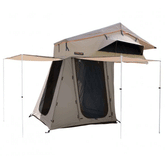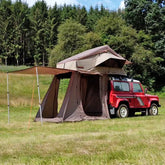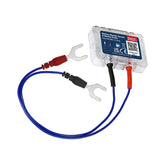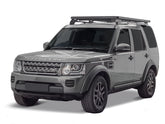Creating Adventures Since 2001
Currency
CALL NOW FOR A DINITROL RUST PROOFING QUOTE
CONTACT US TO ARRANGE A ROOF TENT / AWNING VIEWING
CALL NOW FOR A DINITROL RUST PROOFING QUOTE
CONTACT US TO ARRANGE A ROOF TENT / AWNING VIEWING
CALL NOW FOR A DINITROL RUST PROOFING QUOTE
CONTACT US TO ARRANGE A ROOF TENT / AWNING VIEWING
CALL NOW FOR A DINITROL RUST PROOFING QUOTE
CONTACT US TO ARRANGE A ROOF TENT / AWNING VIEWING
Can I Fit A Roof Tent to My Car?
We do get asked this an awful lot and the simple answer is that in 99.9% of all cases the answer is Yes you can!

Roof tents (or roof top tents) have come a long way since they were first invented in Italy in 1957. Surprisingly, both a hard shell and a soft-shell tent were developed and patented during this time but these were weighty and cumbersome and they could only be fitted a small number of vehicles – a lot has changed today.
Today, roof top tents come in all shapes and sizes, with different features to suit most applications and budgets. I have covered this in more detail in another post. (see here).
The hard-shell roof top tents offer speedy opening and closing whilst the soft, fold over type offer a lighter weight with a smaller closed roof foot print whilst generally offering larger open foot print (however the speed of opening is compromised).
There are also now numerous annex’s, awnings, flysheets etc to increase your liveable space that the roof tent can provide.
The main consideration when fitting a roof tent, once you have decided the style that suits you, is how to attach it.
Roof Racks and Roof Bars – A Brief Explanation
Firstly, let me explain the difference.
A roof rack is a full platform comprising of a bed and multiple feet, that often fill the roof (but not always) of a vehicle – see the images below.


Roof racks can carry far more than roof bars and the platform makes the loading and carrying of multiple items easier. Roof racks come in a variety of materials but the most popular are constructed of aluminium to keep the weight down. The main downside of a roof rack is its weight and that they are not widely available for cars. Those that are available can be found on our web site here.
https://www.trekoverland.com/collections/roof-racks/Roof-Racks
Roof bars on the other hand are available for 99% of the vehicles on the road today. They come in pairs and each one has 2 feet (ways of attaching to the roof) with a single treadplate connecting the two.

Roof bars also come in a variety of materials. The feet can be made from either steel or composite plastic and the tread plates from steel or aluminium. Obviously, roof bars weigh a lot less than a full roof rack. Most aluminium bars are rated to the same static load as steel ones and as they are generally wider, a greater variety of items can be fitted to them. They are also aerodynamically shaped which reduces wind noise whilst driving. As roof bars are much easier to remove from a car it is always advised to fit locking ones. Our full range of roof bars can be found here.
https://www.trekoverland.com/collections/roof-bars
Roof tents don’t just have to be fitted to roof racks (there are advantages of a roof rack especially when wanting to maximise the carrying capability of your vehicle) but they are not essential.
All sorts of roof tents can be fitted to roof bars, the key is to get the correct roof bars for your vehicle and make sure that they have the correct static weight rating for the roof tent (no one should ever be inside the roof tent whilst the vehicle is being driven so the dynamic weight is not important ) – please see our other article to explain the difference –(https://www.trekoverland.com/pages/roof-load-rating-for-roof-tents?_pos=1&_sid=76727ee2f&_ss=r ). Apart from carrying capability, the style of roof bar is important too.
The roof bar needs to have the main weight (force) of the roof tent distributed over the mounting feet of the roof bar. Not only is this the strongest point of the roof bar assembly but where the roof bars mount to the vehicle is also one of the strongest points of the roof.
The images below show the style of roof bars recommended for roof tent fitting and the forces that act on them compared to those that we do not recommend.

As you can see the ‘good’ bars cross the feet whereas the ‘bad’ bars (for roof tent fitting of course) attach to the side of the feet.
The feet of the roof bars are designed to fit depending on your roof type, the main types can be seen below.

It is important to know when selecting your roof bars what your roof type is. Of course if you are confused to which roof type you have one of our staff is always on hand to help you out.
Trek Overland have been one of the leading suppliers of roof racks for the off-road market for many years and we are now really proud to be able to offer a wide range of roof racks AND roof bars for all sorts of vehicles, not just 4x4’s. Each roof bar has been specifically checked to make sure that they are suitable for mounting your roof top tent to.
Our simple drop down menu allows you to pick your vehicle and roof type and it will then display the roof bars available for you.
Roof Bar Fitment Checker
Please Select Your Vehicle




For some vehicles and tents, the fitting can be slightly trickier than normal. Our dedicated team have a wealth of knowledge when it comes to fitting of all different brands of roof tents to different bars or racks. They can offer advice and solutions for most issues encountered or if you prefer, we can even fit your tent for you.

In summary, fitting a roof tent to your car is typically achievable, with various options available to suit different needs and budgets. Whether you opt for a hard-shell or soft-shell tent, the key lies in selecting the appropriate attachment method, such as roof racks or roof bars. At Trek Overland, we provide a range of solutions and expert guidance to ensure a secure and enjoyable outdoor experience. With our selection of racks, bars, and accessories, we're dedicated to helping you embark on your outdoor adventures with confidence.
Whatever the vehicle and whatever the tent, we can now offer a one-stop-shop for all of your needs. Just use the selector above or follow this link to get started.
https://www.trekoverland.com/pages/roof-bar-selector
- Choosing a selection results in a full page refresh.








